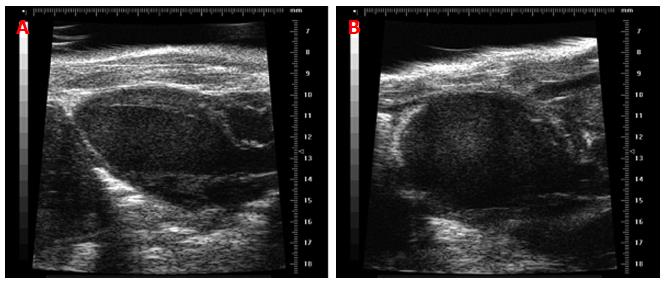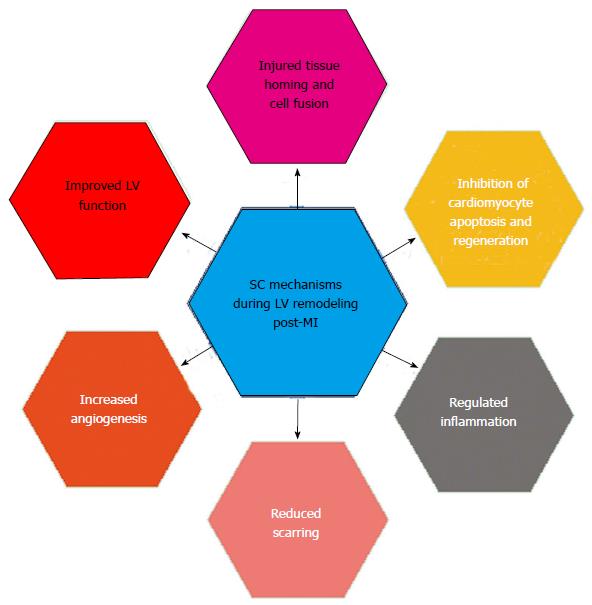Copyright
©2014 Baishideng Publishing Group Inc.
World J Cardiol. Jul 26, 2014; 6(7): 610-620
Published online Jul 26, 2014. doi: 10.4330/wjc.v6.i7.610
Published online Jul 26, 2014. doi: 10.4330/wjc.v6.i7.610
Figure 1 During the course of left ventricular remodeling, (A) the normal elliptical shape of the left ventricular changes to spherical (B) as illustrated by the echocardiograms of the mouse permanent ligation myocardial infarction model.
Image A was recorded at baseline and image B was recorded at day 7 post-myocardial infarction.
Figure 2 Stem cells possess multifunctional properties to promote damaged myocardium repair and regeneration post-myocardial infarction.
As illustrated by this model, stem cells have a tremendous ability to home to sites of injury, fuse with injured cells, inhibit cardiomyocyte apoptosis, replace dead cardiomyocytes, as well as secrete paracrine factors to regulate the inflammatory response, fibrosis, and neovascularization post-myocardial infarction. LV: Left ventricle; SC: Stem cell; MI: Myocardial infarction.
- Citation: Zamilpa R, Navarro MM, Flores I, Griffey S. Stem cell mechanisms during left ventricular remodeling post-myocardial infarction: Repair and regeneration. World J Cardiol 2014; 6(7): 610-620
- URL: https://www.wjgnet.com/1949-8462/full/v6/i7/610.htm
- DOI: https://dx.doi.org/10.4330/wjc.v6.i7.610










